In Britain few groups are as colourful and varied as the beetles. We have over 4,000 species, including no fewer than 300 ground beetles. The beetle species illustrated below are relatively abundant and easy to identify.
Most of these species are active by day and can be seen in parks or gardens, though a couple will take a bit more searching. The dor beetle, for example, is mostly found on dung-strewn grassland, while the carrion beetles – undertaker of the beetle world – seeks out corpses to bury as a larder for its grubs.
Good methods to find beetles include sifting leaf litter, peering under logs and stones, checking foliage, and burying pitfall traps in flowerbeds overnight. Try making a pooter, an easy-t0-make bit of equipment for catching and looking at small invertebrates without touching them.
Learn more about beetles and identifying invertebrates:
All illustrations by Dan Cole/The Art Agency, unless otherwise credited.
2-spot ladybird (Adalia 2-punctata)
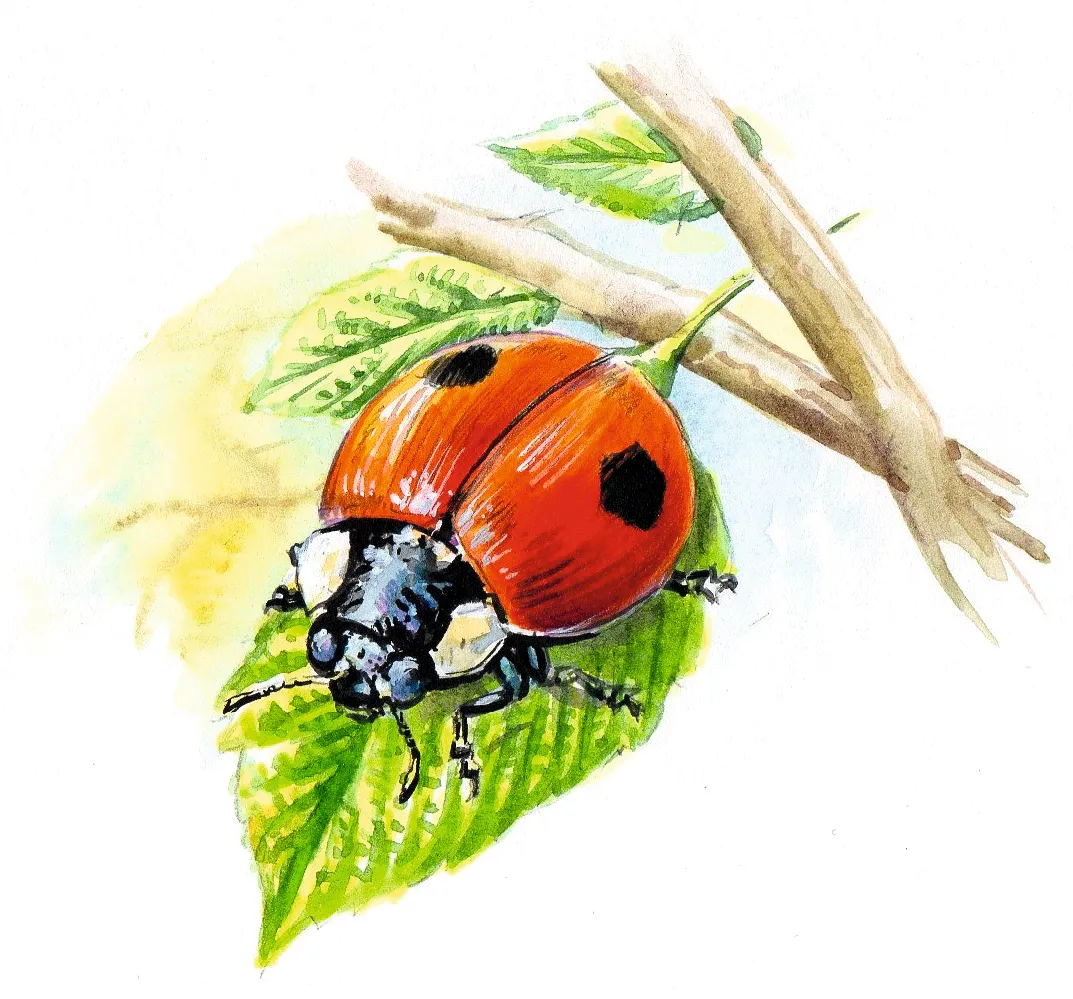
4–5mm. Usually two black spots on red wingcases; forms with red spots on black also exist. Now declining.
7-spot ladybird (Coccinella 7-punctata)

5–8mm. Seven black spots on red wingcases. The most abundant and frequently seen native ladybird.
Harlequin ladybird (Harmonia axyridis)

7–8mm. Very variable; often red with black spots, or black with red spots. Non-native; predator of UK ladybirds.
Leaf weevil (Phyllobius pyri)

5–7mm. Elongated head and ‘beak’; green with gold spangles, becoming darker with age. On trees and shrubs.
Lily beetle (Lilioceris lilii)
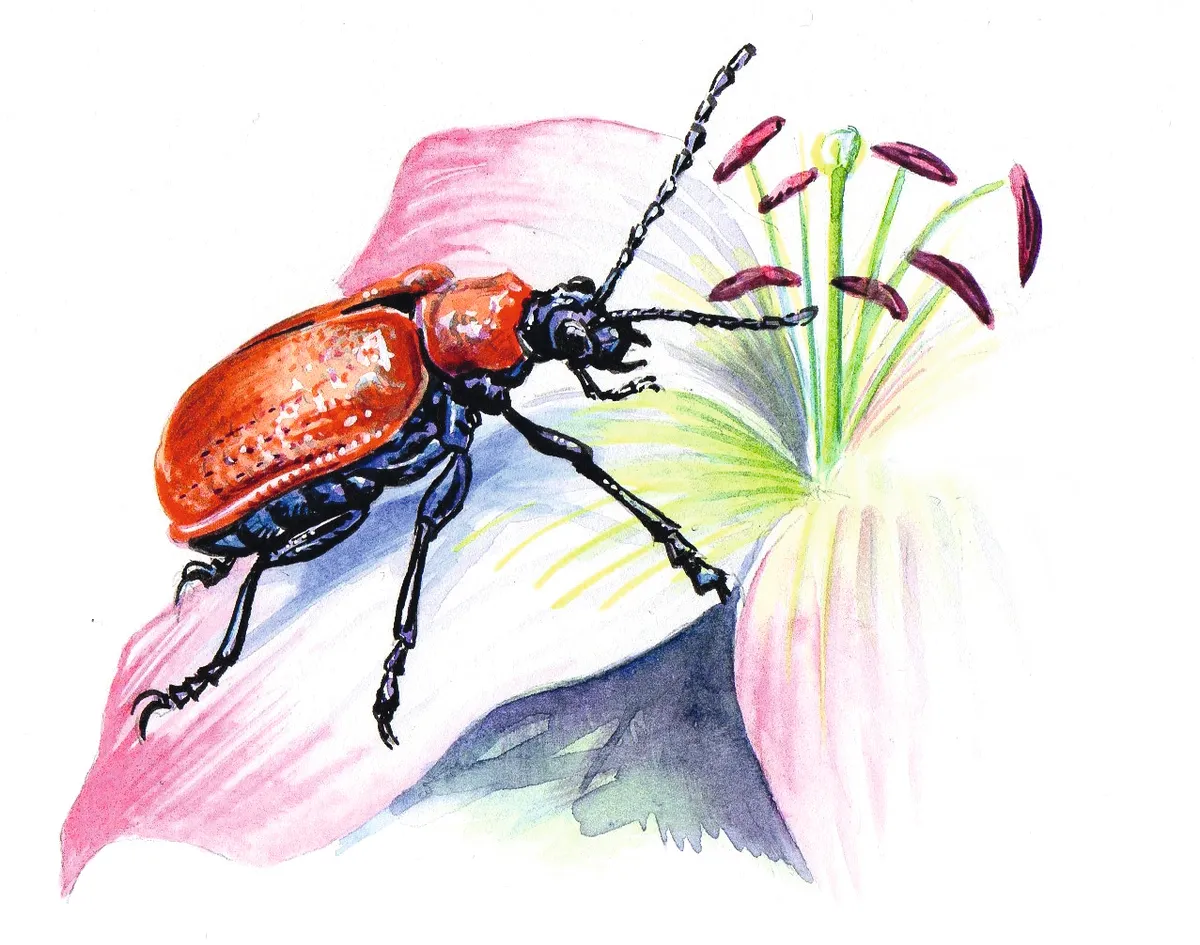
6–8mm. Non-native; feeds on lily leaves and buds. Spreading north, recently reaching Scotland. Similar in appearance to the black-headed (Pyrochroa coccinea) and red-headed (P. serraticornis) cardinal beetles.
Thick-legged flower beetle (Oedemera nobilis)

8–10mm. Iridescent green, with long, narrow wingcases and swollen thighs. Feeds on pollen in flowery places.
Dor beetle (Geotrupes sterocorarius)
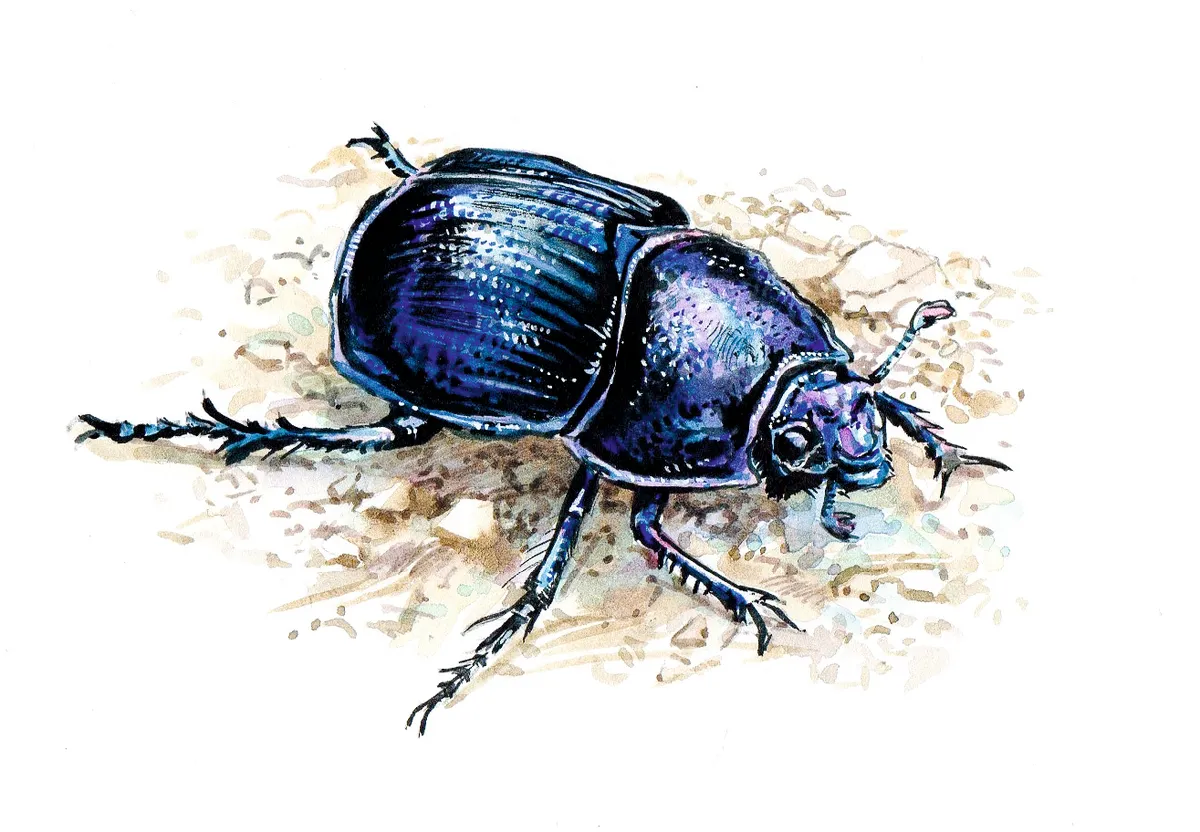
15–25mm. Shiny with a bluish tinge, spiky legs and grooved wingcases. Larvae feed on dung in grassland.
Devil's coach horse beetle (Ocypus olens)
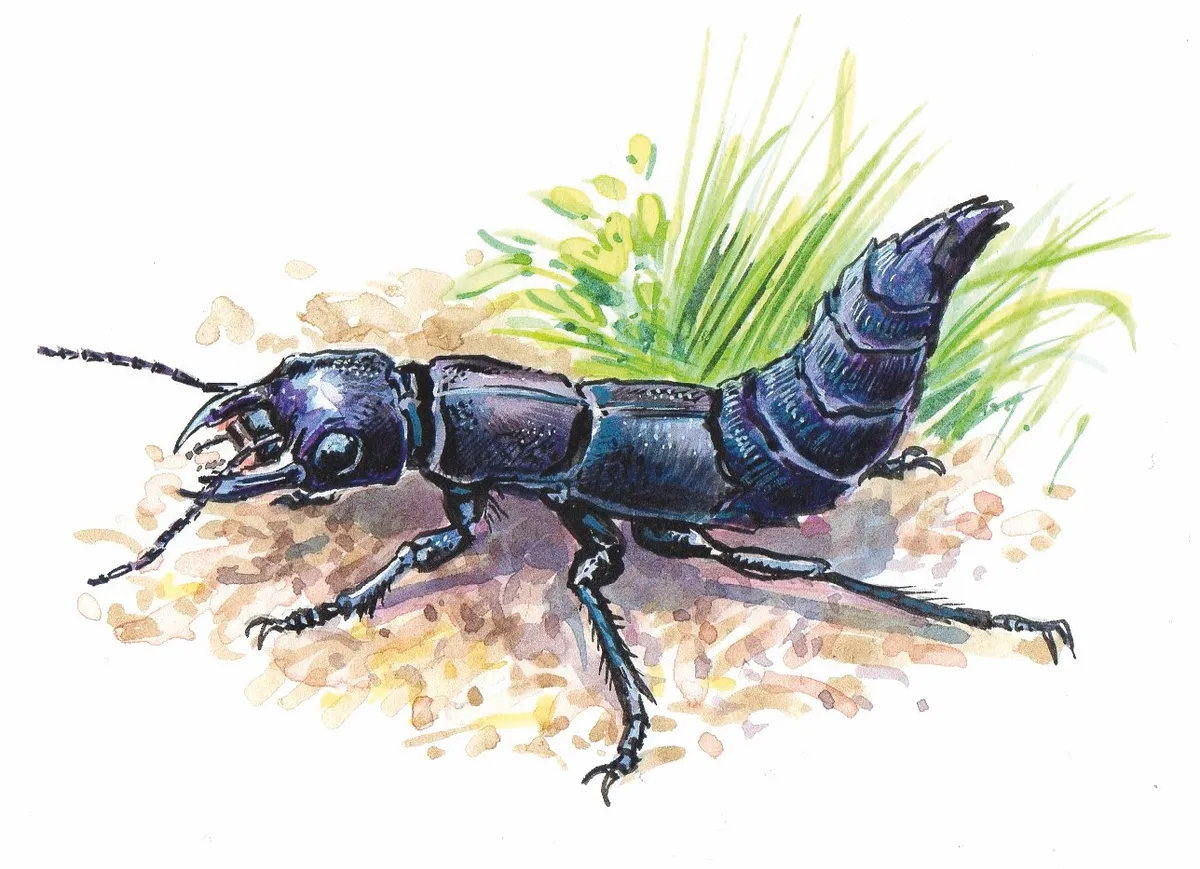
20–30mm. Long body and very large jaws. Lifts tail if alarmed. Hides under logs, stones or leaves; hunts at night.
Violet ground beetle (Carabus violaceus)
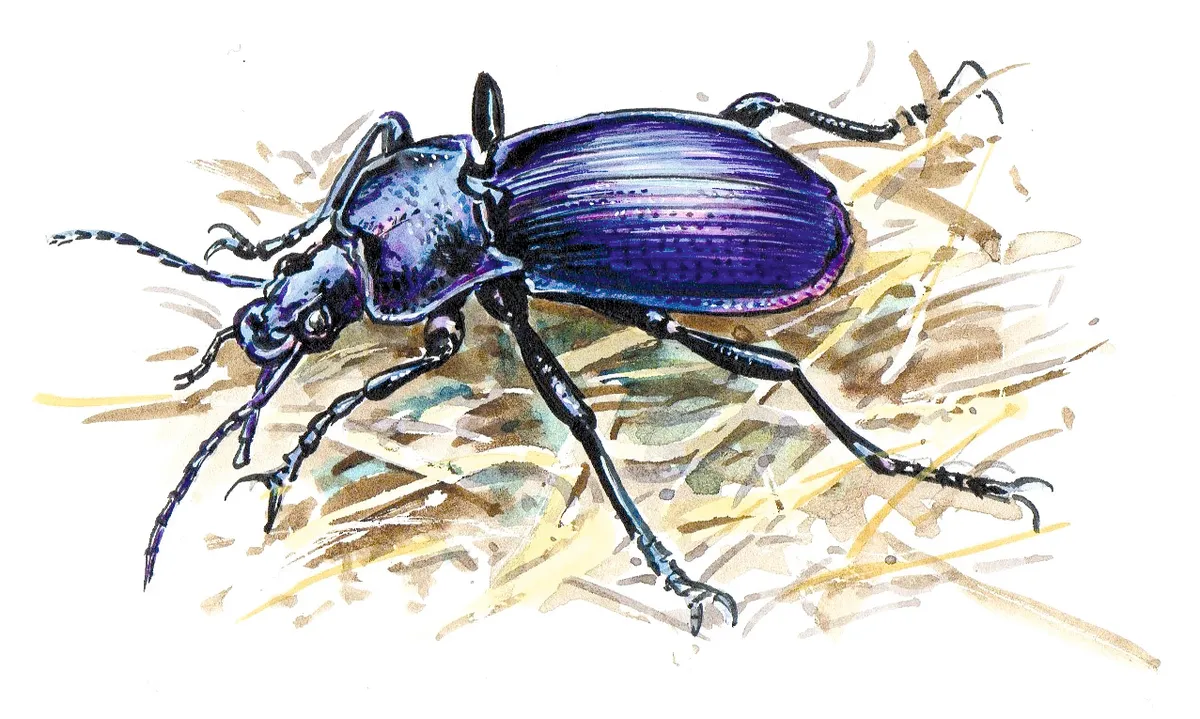
20–30mm. Shiny body has purplish sheen. Active nocturnal predator; by day hides under logs and stones.
Ground beetle (Poecilus cuprous)
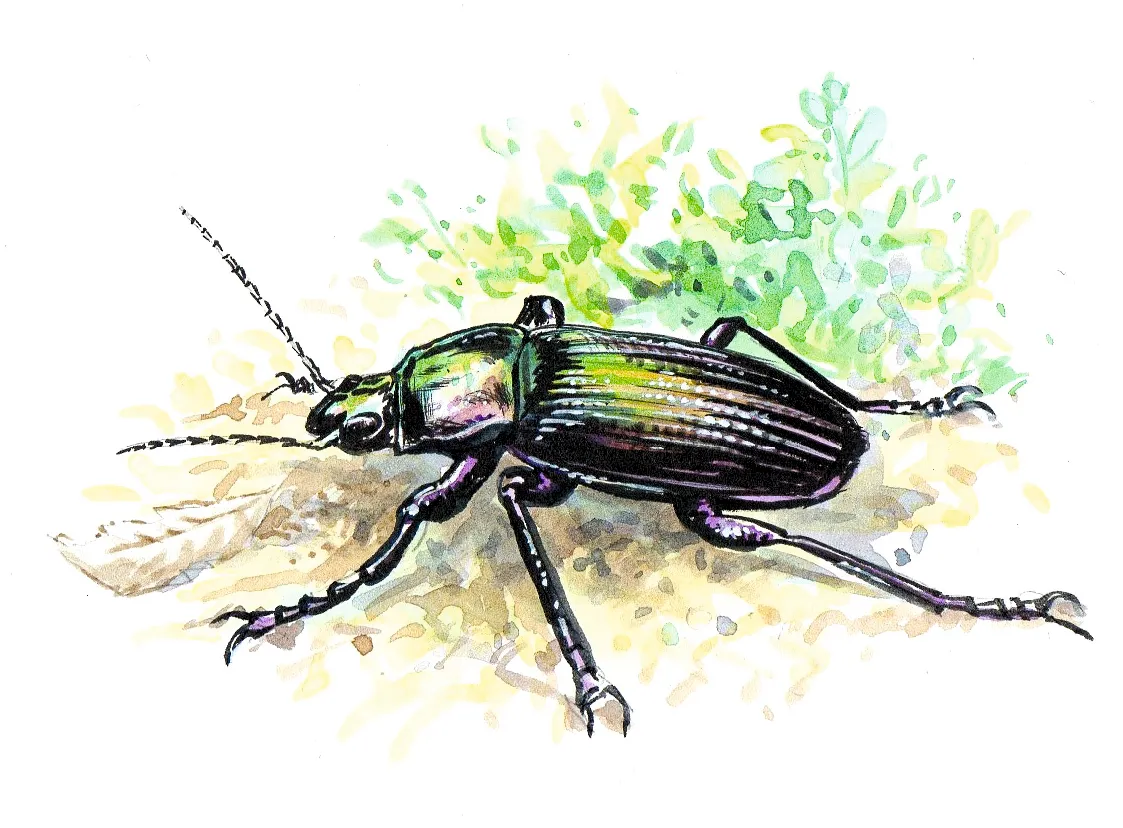
11–13mm. Green or coppery sheen; grooved wingcases. Open, dry, grassy areas; less common in north.
Ground beetle (Notiophilus biguttatus)
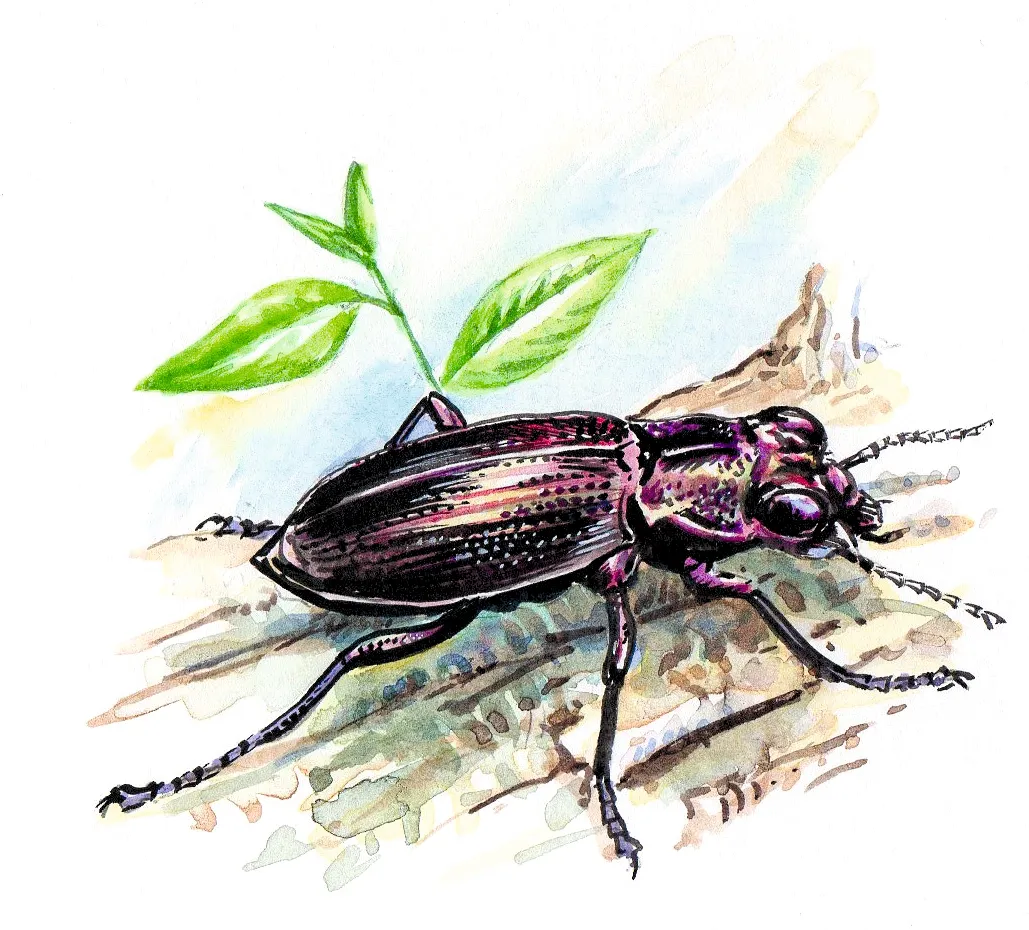
5–6mm. Small, with proportionately huge eyes. Hunts tiny springtails and mites on paths and in flowerbeds.
Ground beetle (Abax parallelepipedus)
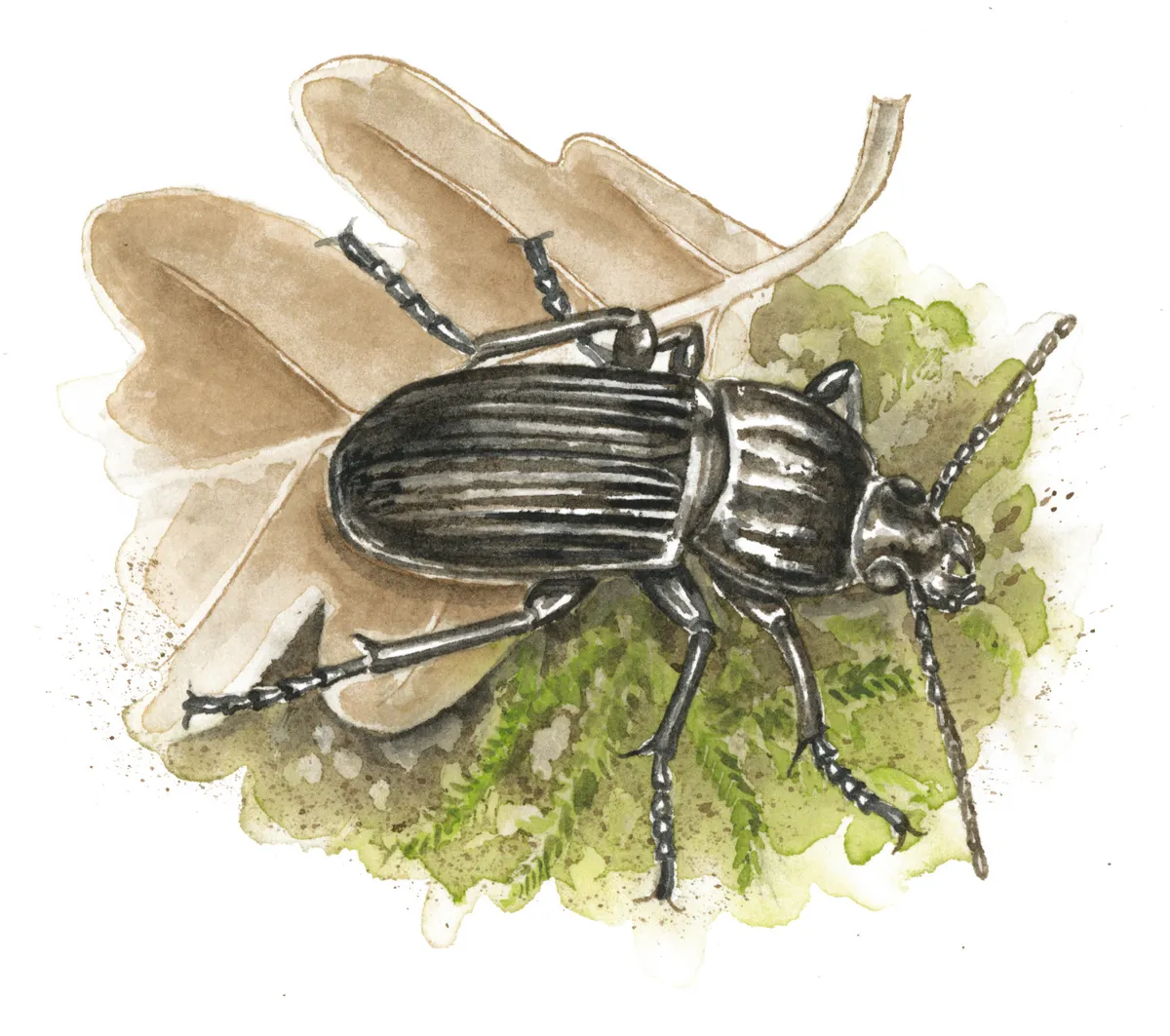
17–22mm. Black beetle with grooved wingcases. Eats earthworms and other soft-bodied invertebrates.
Carrion beetle (Nicrophorus investigator)
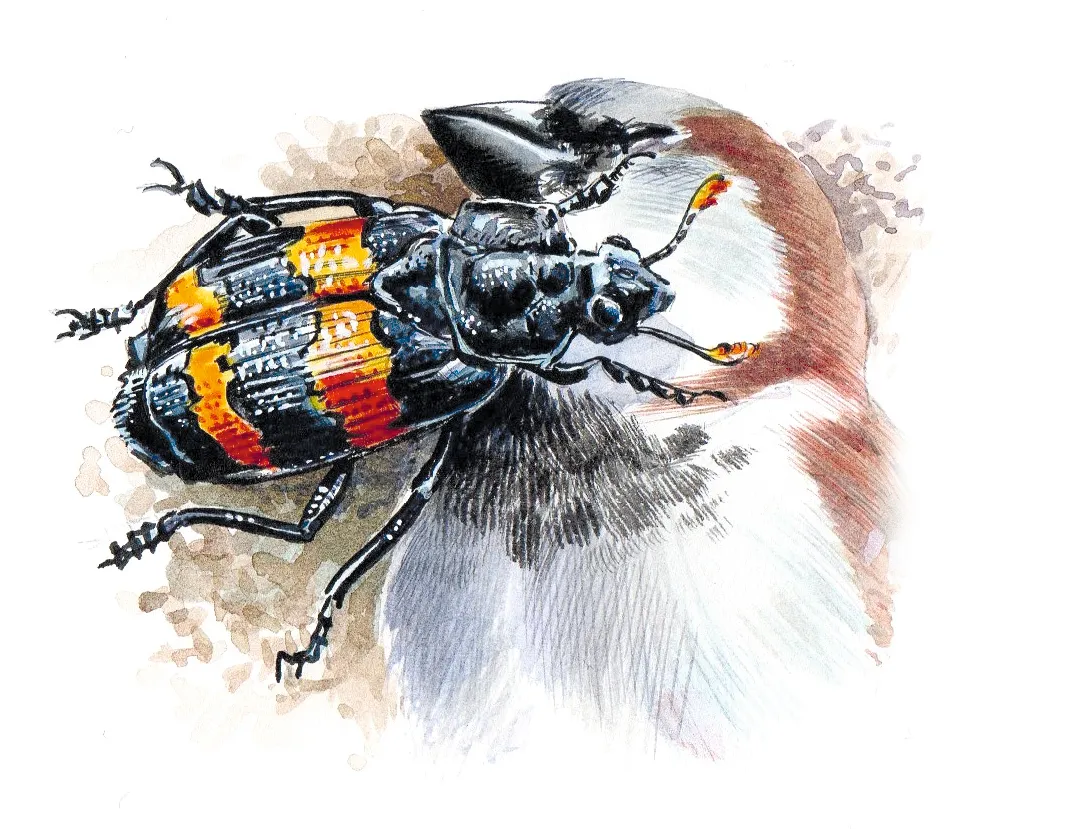
Up to 22mm. Attracted to dead birds and mammals, which its larvae eat. A number of the Nicrophorus species look similar.
Carrion beetle (Silpha atrata)
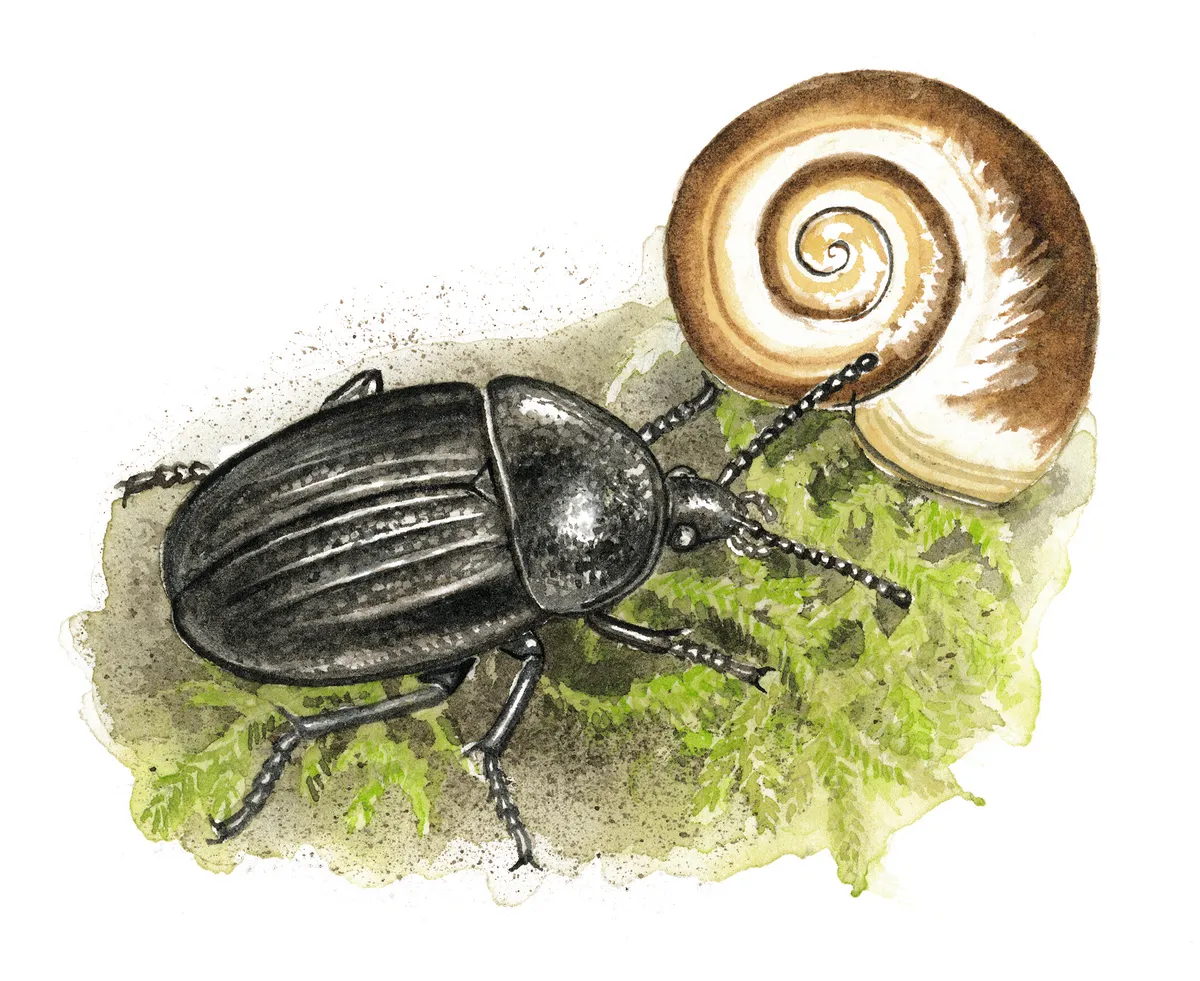
10–15mm. Mat-black beetle with broad wingcases. Feeds on snails and a wide variety of carrion.
Buzzing snail-hunter (Cychrus caraboides)
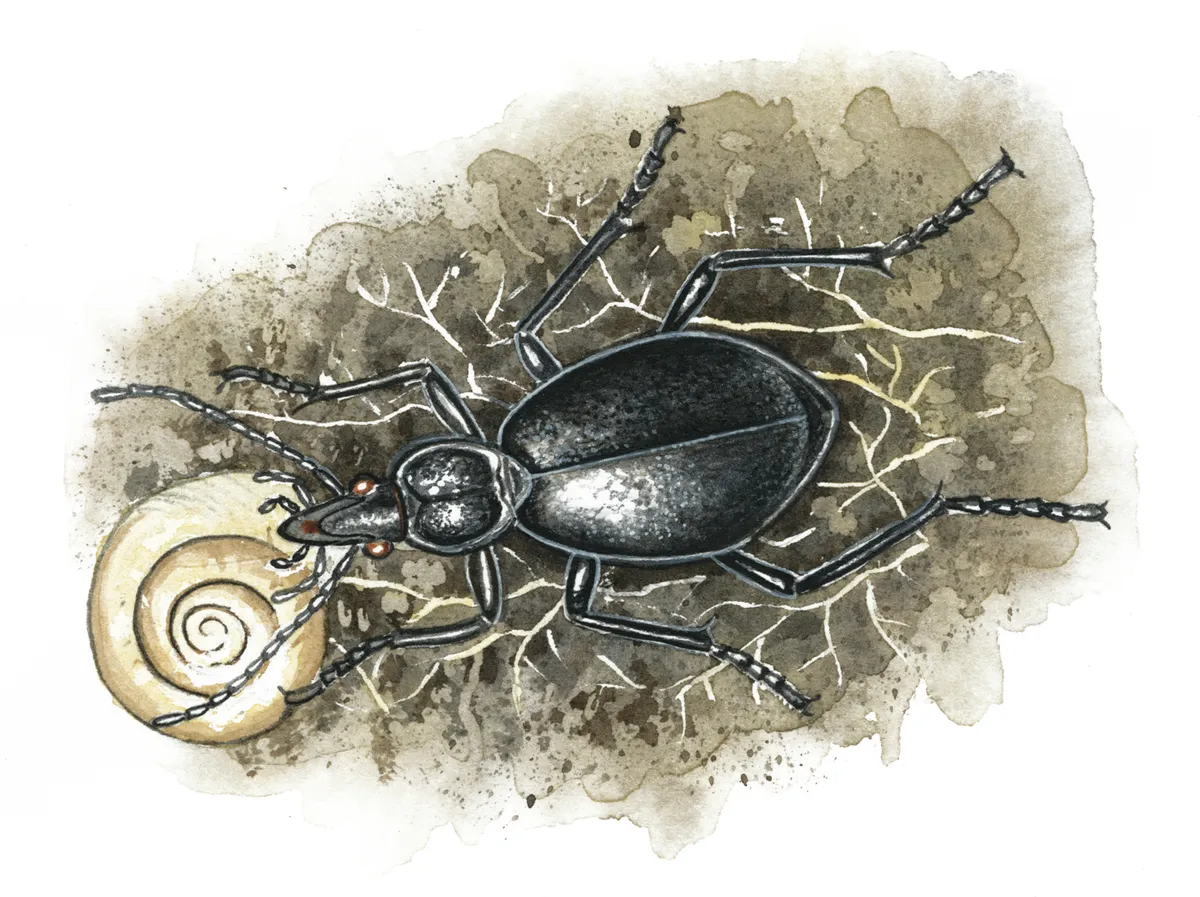
15–20mm. Long ‘snout’ probes snail shells. Also eats wide range of soft-bodied prey. Buzzes when handled.
Wasp beetle (Clytus arietis)

6–15mm. Abundant, fast-moving wasp mimic. Frequently basks on sunlit logpiles, stumps and leaves. The wasp beetle is part of the longhorn beetle family.
Main image: A 7-spot ladybird on a flower. © Jacky Parker Photography/Getty